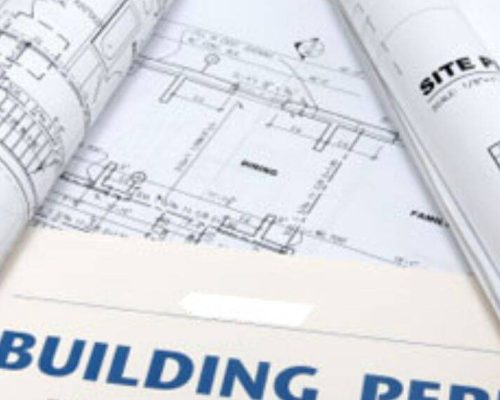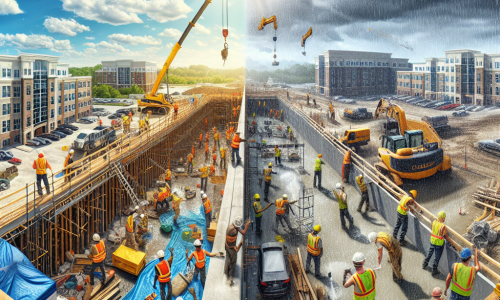Benefits of Using Sustainable Materials in Delaware Construction Projects
When it comes to construction projects in Delaware, there is a growing trend towards using eco-friendly and sustainable building materials. This shift is driven by a desire to reduce the negative impact of construction on the environment and to create healthier and more energy-efficient buildings. In this article, we will explore the benefits of using sustainable materials in Delaware construction projects.
One of the main benefits of using sustainable materials in construction is the positive impact on the environment. Traditional building materials, such as concrete and steel, have a significant carbon footprint due to the energy-intensive processes involved in their production. On the other hand, sustainable materials, such as bamboo, straw, and recycled materials, have a much lower carbon footprint. By using these materials, construction projects can significantly reduce their carbon emissions and contribute to mitigating the effects of climate change.
In addition to reducing carbon emissions, sustainable materials also have a lower impact on the environment in terms of waste generation. Traditional construction materials often end up in landfills at the end of their lifespan, contributing to the growing problem of waste management. In contrast, sustainable materials are often biodegradable or recyclable, reducing the amount of waste generated by construction projects. This not only benefits the environment but also reduces the cost of waste disposal for construction companies.
Another significant benefit of using sustainable materials in construction is the potential for cost savings. While some sustainable materials may have a higher upfront cost, they often have a longer lifespan and require less maintenance, resulting in cost savings in the long run. For example, using bamboo as a building material can save up to 30% in construction costs compared to traditional materials. Additionally, sustainable materials can also contribute to energy savings in buildings. Materials such as straw and hemp have excellent insulation properties, reducing the need for heating and cooling systems and resulting in lower energy bills.
Apart from the environmental and cost benefits, using sustainable materials in construction can also have a positive impact on the health and well-being of building occupants. Traditional building materials, such as paints and adhesives, often contain harmful chemicals that can off-gas and contribute to poor indoor air quality. Sustainable materials, on the other hand, are often made from natural and non-toxic materials, creating a healthier indoor environment for occupants. This is especially important for buildings such as schools and hospitals, where occupants spend a significant amount of time indoors.
Moreover, using sustainable materials can also have a positive impact on the local economy. Delaware has a rich agricultural sector, and using sustainable materials such as straw and hemp can create new markets for local farmers. This not only supports the local economy but also reduces the carbon footprint of construction projects by sourcing materials locally, reducing transportation emissions.
In conclusion, there are numerous benefits to using sustainable materials in Delaware construction projects. From reducing carbon emissions and waste generation to cost savings and improved indoor air quality, sustainable materials offer a more environmentally friendly and healthier alternative to traditional building materials. Additionally, their use can also support the local economy and contribute to the overall sustainability of the construction industry. As the demand for sustainable buildings continues to grow, it is essential for construction companies in Delaware to consider incorporating these materials into their projects. By doing so, they can not only contribute to a greener and healthier environment but also reap the many benefits that come with using sustainable materials.
Top Eco-Friendly Building Materials for Delaware Homes and Businesses

As the world becomes more environmentally conscious, the demand for eco-friendly building materials has increased. Delaware, known for its beautiful beaches and rich history, is also making strides towards sustainability in its construction industry. Whether you are building a new home or renovating a commercial space, incorporating eco-friendly building materials can not only benefit the environment but also improve the overall quality and value of your project.
One of the top eco-friendly building materials for Delaware homes and businesses is bamboo. This fast-growing grass is not only aesthetically pleasing but also incredibly durable. Bamboo has a higher tensile strength than steel, making it an ideal material for construction. It is also a renewable resource, with some species growing up to three feet in a single day. Bamboo can be used for flooring, cabinetry, and even structural elements such as beams and columns.
Another popular eco-friendly building material is reclaimed wood. This refers to wood that has been salvaged from old buildings, barns, or other structures and repurposed for new construction. Reclaimed wood not only adds character and warmth to a space but also reduces the demand for new timber, which can contribute to deforestation. In Delaware, there are several companies that specialize in sourcing and repurposing reclaimed wood, making it easily accessible for construction projects.
For those looking for a more modern and sleek aesthetic, recycled metal is a great eco-friendly option. Recycled metal, such as steel or aluminum, is made from scrap metal that has been melted down and reformed into new products. This process requires significantly less energy than producing new metal, making it a more sustainable choice. Recycled metal can be used for roofing, siding, and even structural elements. It is also highly durable and can withstand harsh weather conditions, making it a practical choice for Delaware’s coastal climate.
In addition to materials made from natural resources, there are also eco-friendly options for insulation. Traditional insulation materials, such as fiberglass, can release harmful chemicals into the air and are not biodegradable. However, there are now eco-friendly alternatives, such as cellulose insulation, which is made from recycled paper products. Cellulose insulation is not only better for the environment but also provides better insulation and soundproofing than traditional materials.
When it comes to flooring, there are several eco-friendly options to choose from. Cork flooring, made from the bark of cork oak trees, is a sustainable and durable choice. It is also naturally resistant to mold and mildew, making it a great option for humid climates like Delaware. Another popular eco-friendly flooring option is linoleum, which is made from natural materials such as linseed oil, wood flour, and cork dust. Linoleum is biodegradable, easy to maintain, and comes in a variety of colors and patterns.
For those looking to incorporate eco-friendly materials into their Delaware project, it is essential to consider the sourcing and production process of the materials. Look for materials that are locally sourced to reduce the carbon footprint of transportation. Also, consider the manufacturing process and choose materials that require less energy and produce fewer emissions.
In conclusion, incorporating eco-friendly building materials into your Delaware project not only benefits the environment but also adds value and durability to your construction. From bamboo and reclaimed wood to recycled metal and cellulose insulation, there are plenty of options to choose from. By making conscious decisions about the materials used in construction, we can all contribute to a more sustainable future for Delaware and beyond.
How to Incorporate Green Building Practices into Your Delaware Project
As the world becomes more environmentally conscious, the construction industry is also shifting towards eco-friendly building practices. Delaware, known for its beautiful beaches and natural landscapes, is no exception. In fact, the state has been at the forefront of promoting sustainable building methods, with many projects incorporating green building practices. If you are planning a construction project in Delaware, here are some tips on how to incorporate eco-friendly building materials and practices into your project.
First and foremost, it is important to understand what makes a building material eco-friendly. Generally, eco-friendly building materials are those that have a minimal impact on the environment throughout their entire life cycle. This includes sourcing, manufacturing, transportation, installation, and disposal. These materials are also energy-efficient, non-toxic, and have a long lifespan. With this in mind, let’s explore some of the eco-friendly building materials that you can use for your Delaware project.
One of the most popular eco-friendly building materials is bamboo. This fast-growing grass is not only strong and durable, but it also has a low environmental impact. Bamboo can be used for a variety of purposes, from flooring and furniture to structural elements. It is also a renewable resource, as it can be harvested every 3-5 years without causing any harm to the plant. In addition, bamboo has a high carbon sequestration rate, meaning it absorbs more carbon dioxide from the atmosphere than other plants. This makes it an excellent choice for reducing the carbon footprint of your project.
Another eco-friendly building material that is gaining popularity is recycled steel. Steel is one of the most widely used materials in construction, but traditional steel production is energy-intensive and produces a significant amount of carbon emissions. Recycled steel, on the other hand, uses scrap metal from old buildings and cars, reducing the need for new steel production. This not only saves energy but also reduces waste in landfills. Recycled steel can be used for structural elements, roofing, and even insulation, making it a versatile and sustainable choice for your Delaware project.
When it comes to insulation, there are several eco-friendly options available. One of them is cellulose insulation, which is made from recycled paper and has a lower environmental impact compared to traditional fiberglass insulation. It is also more effective in reducing energy consumption and has a longer lifespan. Another option is sheep’s wool insulation, which is a natural and renewable material. It is non-toxic, biodegradable, and has excellent thermal and acoustic properties. These eco-friendly insulation materials not only reduce energy consumption but also improve indoor air quality.
In addition to building materials, there are also eco-friendly practices that you can incorporate into your Delaware project. One of them is using passive solar design. This involves orienting the building to maximize natural light and heat from the sun, reducing the need for artificial lighting and heating. Another practice is rainwater harvesting, which involves collecting rainwater for non-potable uses such as irrigation and toilet flushing. This reduces the demand for treated water and helps conserve this precious resource.
Furthermore, you can also consider using renewable energy sources such as solar panels or wind turbines to power your project. Delaware has a favorable climate for solar energy, and the state offers incentives for installing solar panels. This not only reduces your project’s carbon footprint but also saves on energy costs in the long run.
In conclusion, incorporating eco-friendly building materials and practices into your Delaware project not only benefits the environment but also has long-term economic advantages. With the state’s commitment to promoting sustainable construction, there are plenty of resources and incentives available to help you make your project more environmentally friendly. By choosing eco-friendly materials and practices, you can create a building that is not only beautiful and functional but also contributes to a greener and more sustainable future for Delaware.










